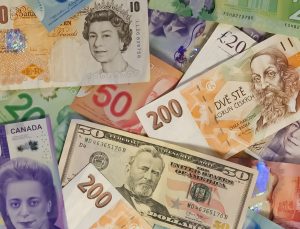Forex trading is the largest and most liquid financial market in the world, with a daily turnover of over $5 trillion. Forex brokers are the intermediaries between traders and the forex market, providing access to trading platforms, educational resources, and technical support. But how do forex brokers make a profit from their services?
In this article, we will explore the various ways in which forex brokers generate revenue and the risks and benefits for traders.
1. Spreads
The primary source of revenue for most forex brokers is the spread, which is the difference between the bid and ask price of a currency pair. The bid price is the price at which traders can sell a currency, while the ask price is the price at which they can buy it. The spread is the broker’s commission for executing the trade.
Forex spreads can vary widely depending on the broker and the currency pair. Major currency pairs such as EUR/USD and USD/JPY typically have lower spreads, while exotic currency pairs can have wider spreads due to their lower liquidity.
2. Commissions
Some forex brokers charge a commission on each trade in addition to the spread. This commission can be a fixed amount per lot or a percentage of the trade’s value. Commissions are more common in the ECN (Electronic Communication Network) and STP (Straight Through Processing) models, which offer direct access to the forex market without the broker acting as a market maker.
Traders who trade frequently or with large volumes may prefer brokers that charge a commission rather than relying solely on spreads.
3. Overnight fees
Forex brokers may charge overnight fees or swaps for holding positions open overnight. These fees are based on the interest rate differential between the currencies in the pair and can be positive or negative depending on the direction of the trade.
For example, if a trader buys a currency with a higher interest rate than the currency they are selling, they will receive a positive swap. On the other hand, if they sell a currency with a higher interest rate, they will pay a negative swap.
4. Inactivity fees
Some forex brokers may charge inactivity fees if traders do not place any trades for a certain period. These fees can range from a few dollars to hundreds of dollars per month and are designed to encourage traders to stay active and generate revenue for the broker.
5. Bonus and promotions
Forex brokers may offer bonuses and promotions to attract new clients and encourage existing clients to trade more. These bonuses can take the form of deposit bonuses, no-deposit bonuses, or cashback rewards. However, traders should be aware that these bonuses often come with strings attached, such as minimum trading volumes, and may not be as beneficial as they appear.
6. Affiliate programs
Forex brokers may also generate revenue through affiliate programs, which reward individuals or companies for referring new clients to the broker. Affiliates can earn a percentage of the broker’s revenue from the referred clients or a fixed commission per client.
Affiliate marketing is a popular way for forex brokers to expand their client base and increase their revenue without incurring significant marketing costs.
Conclusion
Forex brokers generate revenue through a variety of methods, including spreads, commissions, overnight fees, inactivity fees, bonuses, and affiliate programs. Traders should be aware of these costs and choose a broker that offers transparent pricing and competitive fees.
While forex brokers can provide valuable services such as access to trading platforms and educational resources, traders should also be aware of the risks involved in forex trading and the importance of proper risk management.





